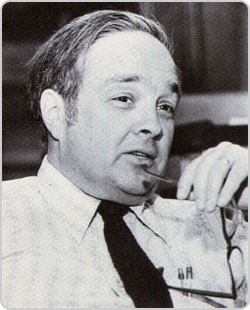Long-Distance Teleportation Between Atoms
- Details
- Category: Research News
- Published: Friday, January 23 2009 08:54
For the first time, scientists have successfully teleported information between two separate atoms in unconnected enclosures a meter apart – a significant milestone in the global quest for practical quantum information processing.
Teleportation may be nature’s most mysterious form of transport: Quantum information, such as the spin of a particle or the polarization of a photon, is transferred from one place to another, but without traveling through any physical medium. It has previously been achieved between photons over very large distances, between photons and ensembles of atoms, and between two nearby atoms through the intermediary action of a third. None of those, however, provides a feasible means of holding and managing quantum information over long distances.
 Bob Gluckstern passed away December 17, 2008.
Bob Gluckstern passed away December 17, 2008.